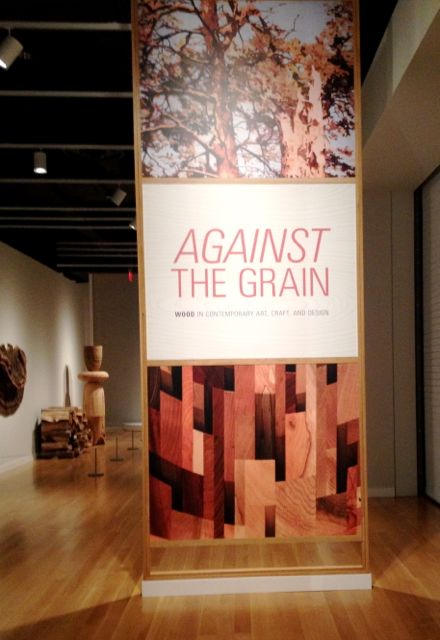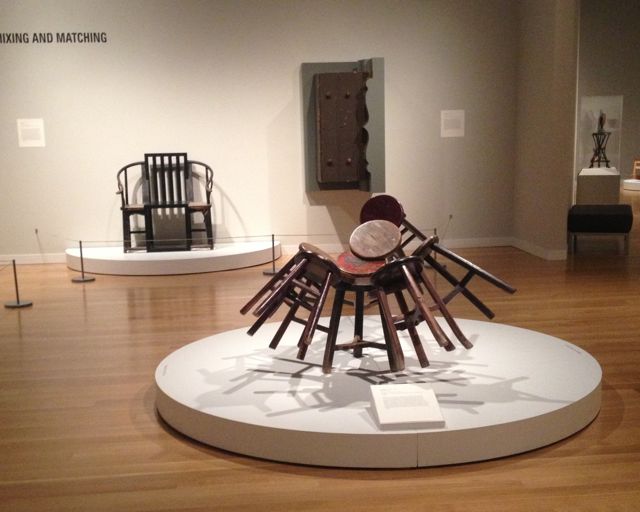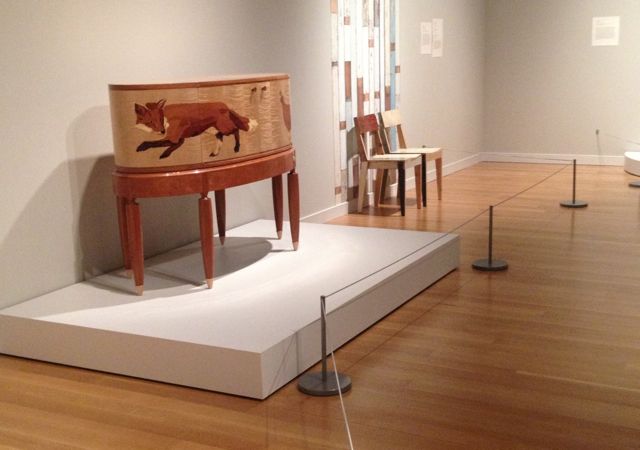
The versatility of wood in “Against the Grain”
“Enignum Motion” by Joseph Walsh is one of the most outstanding examples of studio furniture design in the Mint Museum’s Contemporary Craft Collection. It is a unique example of the versatility of wood and conveys movement in a totally unique way. As such, Walsh’s perspective on “Against the Grain: Wood in Contemporary Art, Craft, and Design,” an exhibition currently at the Mint Museum Uptown (a Knight Arts grantee), is extremely relevant. Walsh will be participating in a conversation about the exhibition and his work with Annie Carlano, Director of Craft & Design, on December 11 at 6 p.m. The talk is free and open to the public!
“Against the Grain” emphasizes the way contemporary artists, designers and craftspeople have made innovations in traditional techniques through the medium of wood. It further explores the heated debate about the boundaries between art, craft and design, posing questions about the necessity of these categories and whether they should be redefined. Organized by the Museum of Arts and Design, New York, New York (MAD), “Against the Grain,” debuted on September 1 and will run through January 27, 2013.
Focusing on one medium-wood, “Against the Grain” features 57 artists and designers from around the world, including sculptors as well as furniture designers all working through this one medium. “Wood is a ubiquitous material and a medium of basic function as well as tremendous versatility. In the last several decades, artists have truly begun to test its creative boundaries, expressing and expanding wood’s aesthetic and conceptual possibilities,” said Lowery Stokes Sims, curator of the show from MAD. “The artists featured in “Against the Grain” represent the forward-thinking approach that has spurred the medium’s renaissance.”
“Grapes” by Ai Weiwei 2008.
Various postmodern tendencies and issues are evident in the works in “Against the Grain,” including mimicry, virtuosity, assemblage, historical veracity and environmental problems. For example, Ai Weiwei’s piece “Grapes” uses stools from the Qing Dynasty to address our valuation of antiques and their corruption from the market. In “Grapes” the stool seats are clustered together, rendering their function obsolete. In a more whimsical vein, Silas Kopf’s piece “Who’s Chicken, Now?” flips the classic theme of the hunter and hunted on its head by portraying chickens as the pursuers chasing after a fox. Kopf uses marquetry to convey this lively scene.
“Who’s Chicken, Now?” by Silas Kopf 2009.
“Against the Grain” is well worth a trip Uptown; the way the artists and designers in the exhibition have used wood will surprise you.
Mint Museum Uptown: 500 South Tryon St., Charlotte; 704-337-2000; www.mintmuseum.org. Open Tues., 10 a.m.–9 p.m.; Wed.–Sat., 10 a.m.–6 p.m.; and Sun., 1–5 p.m. Admission: adults, $10; students/seniors, $8; children 5-17, $5; free to all on Sept. 3.
Recent Content
-
Artsarticle ·
-
Artsarticle ·
-
Artsarticle ·


